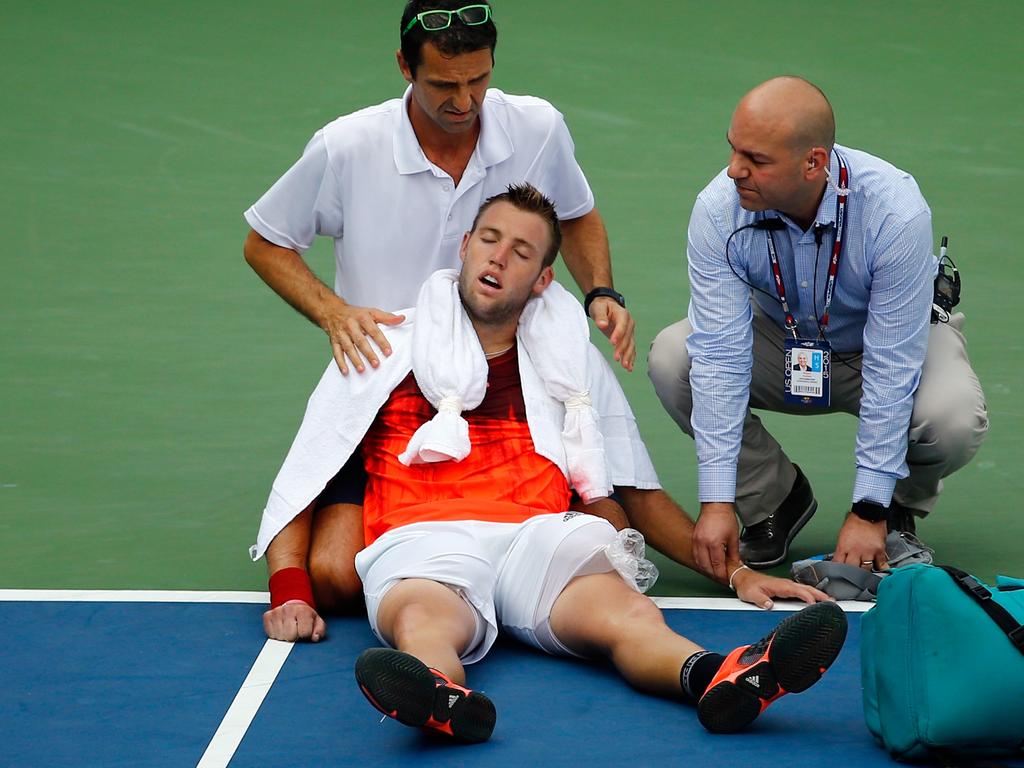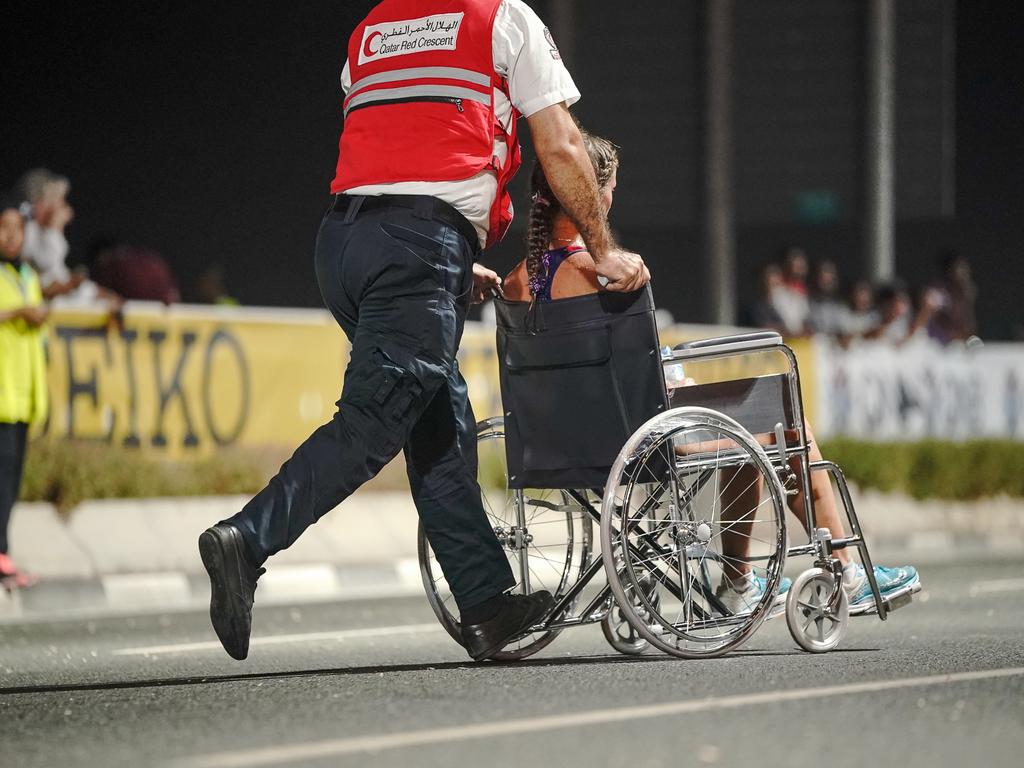‘Hazardous’: how heat could kill summer sport
Extreme weather is increasingly affecting summer sports, with life-changing consequences for athletes. But now a new group is speaking up on the issue.
Don’t try and tell racewalker Rhydian Cowley and netballer and AFLW player Sharni Norder that climate change and sport have nothing to do with each other.
They’ve both lived it, with competitions moved or abandoned because of extreme weather, training curtailed because of poor air quality during bushfire season, and in Norder’s case, a teammate who was left with a life-changing condition after playing in extreme heat.
“One of my close girlfriends suffered from heat stroke while playing, and she never recovered,” Norder said.
“It was a 35 degree day but it might have been 42 or 47 inside.”
Doctors later diagnosed Norder’s friend with a form of chronic fatigue syndrome.
“She’s can’t live her life like she did,” Norder said. “She’s gone from an elite athlete to not being able to train at all. She can’t even go for a run.”
Her story demonstrates the particular vulnerability elite athletes can have to extreme environmental conditions. Trained to push their bodies beyond normal limits, they can be susceptible to incredible harm if the surrounding environment is also acting beyond its normal limits.

It’s a subject of increasing urgency for sports bodies at all levels, with organisations such as the AFL, Tennis Australia and Cricket Australia following new protocols to ensure player safety in times of abnormal environmental conditions.
A 2019 global study of the impact of extreme heat on cricketers found the effects could be fatal and concluded it was a problem to which authorities had to give much greater attention.
Concerns about soaring temperatures in Tokyo during this year’s Olympic Games prompted organisers to move the walk and marathon events 800 kilometres north to Saporro.


But the move proved redundant when temperatures hit a blistering 35 degrees on the day of Cowley’s event, the 50km walk.
“It wasn’t so much that it made conditions impossible, but just much more difficult and much more dangerous,” he said.
“The heat stress indicator was getting right up into the hazardous areas right as the race was finishing. I was the only person that walked a personal best in the entire race; I think that’s a refection of just how challenging the conditions were for everyone.”

The link between sports and climate change will be highlighted at the COP26 conference in Glasgow, starting tomorrow, with two weeks of forums, ranging from how events can be staged more sustainably, to how sport’s immense popularity can be used to inspire planet-friendly behavioural change.
In Australia, the Sports Environment Alliance has brought together more than 50 groups (including the Australian Olympic Committee) to drive the discussion further.

CEO Sheila Nguyen said climate change was already affecting how sport was played and viewed, in a multitude of ways.
“As an industry we must consider the effect of climate change on the places where we play, the possible impairment on performance, and scheduling challenges, as much as the safety of our vulnerable and take leadership on climate health to ensure we continue to have places where we play,” Ms Nguyen said.
“These are all inextricably linked.”

Norder said climate change had the potential to strip sport out of the typical Aussie childhood.
“All I remember as a kid is playing driveway cricket in the summer and having a run around and kicking the footy over the school holidays. As temperatures keep rising, kids just aren’t going to be able to do those things that we were lucky enough to do when we were younger,” she said.
More Coverage
Originally published as ‘Hazardous’: how heat could kill summer sport




